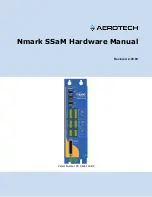
V1/2021-30314
32
Assembly
Installation
Warning
The installation must be carried out in strict compliance with the safety regulations for mobile construction sites (Decr. Pres. Rep.
164/56 and Legislative Decree 494/96) to ensure safety. The client and installer shall bear the liability stipulated by law in each
case. Before using mobile or fixed scaffolding, ladders, or any personal protective equipment (safety harnesses and straps, etc.),
ensure that these meet regulations and are in good condition. Use appropriate lifting equipment. The installers must observe the
stipulated safety regulations. If the clamp awning is to be installed on a floor higher than the ground floor, the corresponding area
must be demarcated and monitored so that no persons can linger under the suspended load. Improper installation can cause
personal injury. Please read the instructions for the correct mounting of the clamp awning thoroughly to avoid the risk of its col-
lapse. First, check the condition of the wall into which the awning will be anchored, especially with regard to dynamic stress to the
awning based on the foreseen maximum wind tolerance.
This clamp awning is designed for a wind load of speeds to a maximum of 38 km/h (wind class 1, wind force 4 on the Beaufort
scale). For this, see also page 29.
Caution!
An extended clamp awning is subject to a variety of forces, including wind and rain.
These forces can be very strong and exert stress on the awning's mounting.
Therefore, detailed knowledge of the condition of the mounting surface must be acquired BEFORE installation.
This knowledge will be used to determine the fixing materials and, if necessary, the number of additional fixing materials.
Different fixing material must be used depending on the type and condition of the substrate.
If the necessary requirements are not met, additional mounts must be used or other technical solutions found, such as mounting
internal counter brackets, using compound dowels, or similar.
In addition, the surface to which the clamp awning is to be attached must be checked for hidden utility lines, such as water, elec-
tricity, and gas.
















































